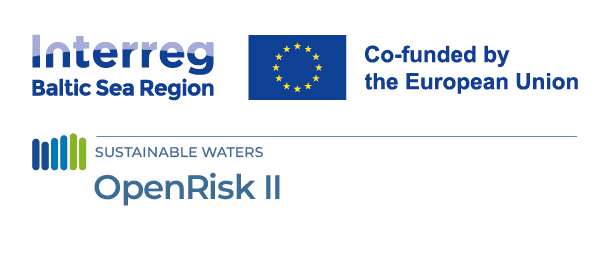
OpenRisk II partner Aalto University to quantify risks of sea ice for shipping in the Baltic Sea and beyond
08 April 2024
OpenRisk II is a project aiming to prevent maritime accidents that may occur in the Baltic Sea Region and minimize their impact on the environment. One of the substantial components of the three year project, financed by Interreg Baltic Sea Region, is accident prevention, which will be addressed by a Baltic adaptation of the AISyRISK tool, currently in operational online use by authorities in Norway. One of the most challenging aspects of adapting AISyRISK is the incorporation of ice as a navigational risk, which is important in the Baltic Sea but which the tool currently lacks.
Aalto University, Department of Mechanical Engineering (Marine and Arctic Technology), is a key project partner tasked to deliver the new ice functionality of the tool. We have asked Assistant Professor Osiris Valdez Banda and Postdoctoral Researcher Liangliang Lu at Aalto University to outline their interest in the project:
“Aalto’s involvement in OpenRisk II entails contributing to the development of the new ice module within the Baltic adaptation of the AISyRISK tool. We are determined to join this project as the consortium endeavors to make significant strides in marine risk management by leveraging collective expertise. Our particular focus lies in the aspect of winter navigation, which closely aligns with our group’s research interests and expertise.”
Professor Valdez Banda and Dr. Lu state that the Northern Baltic Sea, known for its typical and active ice and sea conditions, stands out as an ideal study area. They emphasize the importance of integrating the Baltic Sea into a well-established tool like AISyRISK, especially in light of the changing climate and evolving maritime traffic patterns in the polar regions, offering significant research opportunities also beyond the Baltic.
While pioneering, this initiative also presents some challenges. Obstacles need to be overcome, such as obtaining high-resolution ship movement (AIS) data and maximizing the information obtained from other studies of winter navigation in the Baltic Sea. According to Liangliang and Osiris, “The AISyRISK ice module for the Baltic Sea and the Arctic will provide a unique feature capable of representing the risk in ice navigation in two contexts with similarities -but also significant differences.”
In addition to other common navigation hazards, the primary risks associated with navigating in ice, as indicated by statistics, involve ship collisions and vessels becoming trapped or immobilized in ice. Ship collisions can occur in various operational situations due to the diverse methods of navigating through icy conditions. Conversely, vessels becoming trapped or immobilized in ice typically occur in situations characterized by heavy or compressive ice conditions, potentially resulting in mission delays and the possibility of hull damage due to ice. Furthermore, a stranded vessel may drift with the ice, increasing the likelihood of grounding or colliding with obstacles like windmill parks.
One of the most important aspects of AISyRISK is the extensive datasets enabling it to function.However, since the existing tool only covers the Norwegian coast, it has been relatively easy to collect the necessary data compared to the Baltic Sea with nine coastal countries. Valdez Banda and Lu describe the challenges they will face in this regard: “Collecting high-resolution data that is both comprehensive and accurate is always challenging. Moreover, acquiring the best operational practices, alongside data analysis and modeling, can present additional difficulties. These challenges must be addressed using different approaches that properly consider the environmental and operational conditions and demands in the Baltic Sea and the Arctic.”
What difference will OpenRisk II, including AISyRISK Baltic and its new ice module, make for navigational safety in the Baltic Sea? The duo answers the question, “OpenRisk II with the new ice module offers the potential to enhance understanding of navigation risks in ice through historical data analysis. This capability can provide authorities with alternative insights for making tactical decisions and allocating resources effectively. Presently, there is a lack of available tools specifically tailored for winter navigation scenarios, making the introduction of this module particularly valuable.”
by Ali Abaday – NDPTL Secretariat





